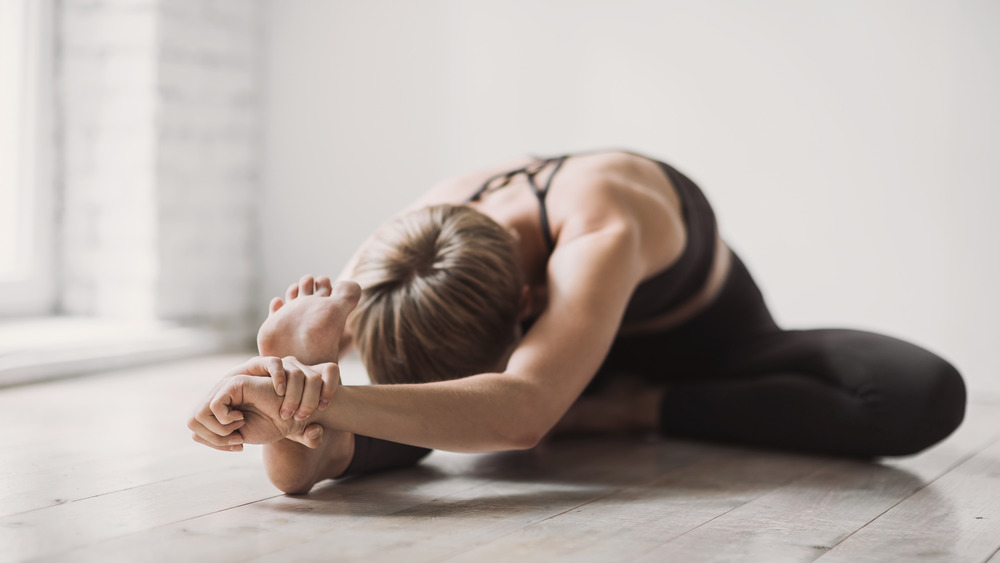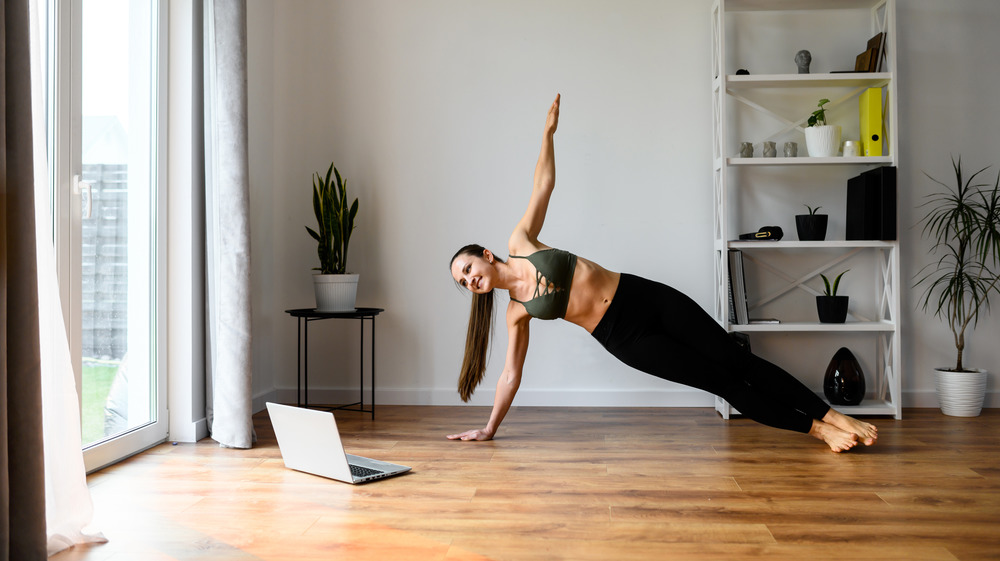'Yoga Butt' Is More Dangerous Than You Think
Yoga teachers everywhere are likely familiar with the term "yoga butt" — a moniker that denotes pain in the hamstring region. While many think that the relaxing flows of yoga are a safer option than other forms of exercise, these movements still come with risk of injury. Since the practice of yoga sometimes neglects to strengthen the glutes, it may leave practitioners vulnerable to getting hurt.
Healthline explains that yoga butt comes from an overuse of certain muscles that various poses use. The overuse impacts the tendons around the glutes, hamstrings and hips, and may make them more susceptible to injury. Jenni Tarma, a yoga medicine therapeutic specialist explains, "Yoga butt, technically called proximal hamstring tendinopathy, is an irritation or inflammation of the hamstring tendons at their attachment site on the ischial tuberosity (the sitting bone)."
Unfortunately, common poses like forward folds, splits and positions that call for the foot to be behind your head can make way for the dreaded yoga butt, the outlet suggests. Furthermore, other strains of this injury involve overuse of the glute muscles from holding poses like Warrior 3, overextended muscles and placing too much weight on your sit bones, Well+Good notes. The best way to know if you're suffering from yoga butt is by noticing any pain in your hamstrings. Intense pain in your hamstrings that runs up and down your legs can be a symptom of this issue, along with toe and calf discomfort. Furthermore, feeling tense or sore where your glutes connect with your thigh muscles can characterize this issue as well.
Modifying your practice is the most effective healing practice
If you think you're suffering from yoga butt, it may be time to see your doctor to make sure you don't exacerbate the injury. Healthline explains that yoga butt comes in a series of flare-ups — meaning that you may not feel it for a few practices and then it may come back, seemingly at random. Head to a professional if the issue is exceedingly painful, but otherwise you can modify your practice to fit your needs and heal the muscles.
Tarma tells the outlet that modifications "could mean avoiding any positions or movements that trigger the symptoms, modifying poses in yoga class, and possibly wearing a compression wrap around the upper thigh to take some of the strain off the hamstrings and their tendons."
Additionally, avoid going too deep into your poses too soon. Well+Good explains that the first 30-60 seconds of your position are like a warm up for your muscles. Diving in too fast, too soon can be a recipe for injury.
Yoga butt doesn't have to derail your practice forever — just make sure to modify as needed and take care of yourself.

